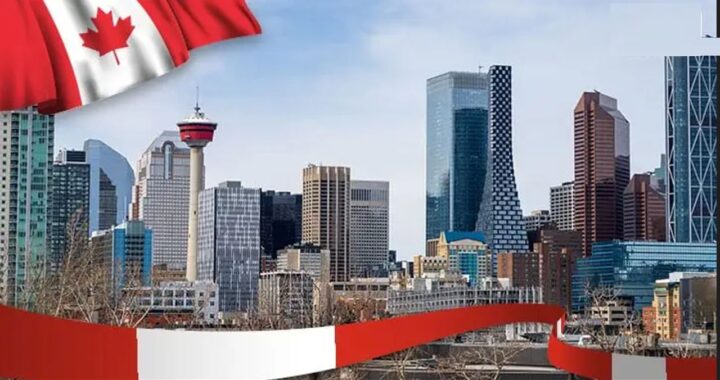Financial Matters: What Post-Secondary Students Need to Know

- Image by Jeremiah Lawrence via Unsplash.com- Financial Matters: What Post-Secondary Students Need to Know
Canada is a world-class destination for its universities and colleges, which is why it attracts many immigrants looking for better opportunities. It’s also more affordable to send your children to school here compared to the US where, immigrant or not, the costs of obtaining a degree can follow you until you start your own family. Whether you’re a student or a parent of a student preparing for higher education, tuition fees and other costs are a few things you must know.
The Cost of Post-Secondary Education in Canada
That said, Canadian post-secondary education is not entirely what you might consider cheap. In fact, the average student debt is at $26,819 which is only slightly lower than the average student debt in America. Canadian students owed $28 billion in student debt to the government in 2018.
There are several educational grants and financial assistance programs provided by the government and private institutions that you can apply for. However, the rising cost of education in Canada doesn’t guarantee that financial aid will be enough to cover it. The average annual cost of post-secondary education is $19,498.75, which includes tuition, course materials, and food. Higher education is undoubtedly expensive but it is an investment. Getting one’s diploma is considered a major milestone and a prerequisite for many employers. Even if financial aid doesn’t cover the entire cost of higher education, parents and students — who are residents of Canada — can still lighten their load by knowing their options.
Financial Aid for Students
• Canada Student Grants Program
The Canada Student Grants Program (CSGP) helps students pay for their post-secondary education expenses. Provided that your family doesn’t reach the income threshold, you are eligible to receive this government-funded program which you don’t have to pay back at all. Full-time students can get up to $3,000 per academic year while part-time students can get $1,800. How much you will actually receive depends on several factors, such as your financial needs (as determined by your family income), tuition fees, and program length.
• Canada Student Loans Program
The Canada Student Loans Program (CSLP) is similar to the CSGP, except the financial assistance you receive will have to be paid back. The CSLP has a grace period of six months after graduation or after a program is finished. Then, the beneficiary is required to repay the total amount borrowed from the program with interest. It covers as much as 60% of your total post-secondary tuition fees.
• Registered Education Savings Plan (RESP)
For long-term planning, Canadian parents and naturalized citizens should consider opening a Registered Education Savings Plan to get their child financially ready for higher education. A guide to RESPs explains that these are tax-sheltered investment accounts specifically designed for a child’s education. The contributions can be withdrawn tax-free for the beneficiary’s schooling expenses. Additionally, the government will match 20% of any RESP contributions up to $2,500, which is essentially an incentive for obtaining higher education.
• Scholarships and Bursaries
Scholarships and bursaries are sponsored by individuals, organizations or charities and are awarded to students based on merit. For bursaries, there is the additional criteria of financial need which means a student must prove that they have difficulty in paying for their own tuition. The good thing about private scholarships and bursaries is that there are many options. For example, the De Beers Group recently awarded funding for women who want to enroll in a STEM degree which are male-dominated fields up to this day. There are plenty of places to look, like the TD Canada Trust Scholarships and the Learning Matters Education Charity for bursaries.
• Student Line of Credit or Personal Loans
Students who don’t qualify for government or private assistance can consider opening a student line of credit or applying for a personal loan from banks and other financial institutions. These have fewer requirements and might be useful for immigrants who aren’t eligible for the above programs or don’t have their permanent resident status yet. However, students might need a co-signer if they haven’t built up enough credit. Although more flexible, note that student lines of credit and personal loans often have higher rates. Repayment should also be done on time to avoid building up interest and racking up debt

 Recent Changes to Canada’s Work Permit Rules and its impact on Immigrants from India
Recent Changes to Canada’s Work Permit Rules and its impact on Immigrants from India  Applications for UK Immigration witness major decline as the Immigration Laws undergo significant changes
Applications for UK Immigration witness major decline as the Immigration Laws undergo significant changes  Recent Changes to Canada’s Temporary Foreign Worker Program (TFWP) Effective May 1, 2024
Recent Changes to Canada’s Temporary Foreign Worker Program (TFWP) Effective May 1, 2024  Immigration Process to Latvia and Job Prospects
Immigration Process to Latvia and Job Prospects  Notario Fraud- a rampant fraudulent practice trapping immigrants to US and Canada
Notario Fraud- a rampant fraudulent practice trapping immigrants to US and Canada  Canada Immigrant Investor Program 2024- loaded with many good features- Check out here
Canada Immigrant Investor Program 2024- loaded with many good features- Check out here  What actions by Trump Government are in store for illegal immigrants in US? What are Challenges to deport illegal immigrants from US?
What actions by Trump Government are in store for illegal immigrants in US? What are Challenges to deport illegal immigrants from US?  What are changes in Canada Start up Visa Program and Self-Employed Persons Program. How would it affect the potential immigrants to Canada?
What are changes in Canada Start up Visa Program and Self-Employed Persons Program. How would it affect the potential immigrants to Canada?